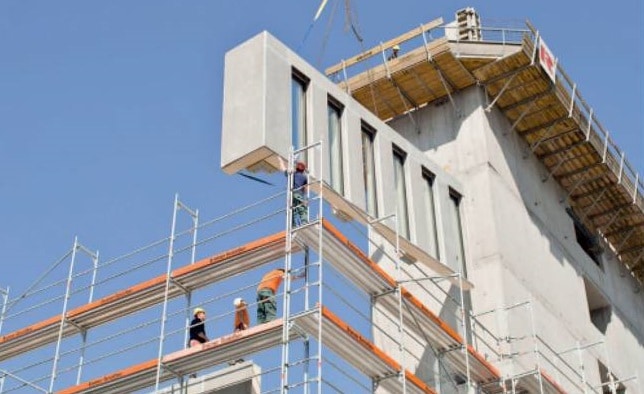Hybrid concrete construction is a method of construction which integrates precast concrete and cast in-situ concrete to make best advantage of their different inherent qualities. The accuracy, speed and high-quality finish of precast components can be combined with the economy and flexibility of cast in-situ concrete.
Hybrid concrete construction produces simple, buildable and competitive structures. The client is given better value and the contractor benefits from increased off-site component manufacture, safe and faster construction and consistent performance.
Benefits of using Hybrid Concrete Construction
Cost
Although the structural frame of a building represents only 10 per cent of the total construction cost, the choice of material for the frame has dramatic consequences for subsequent processes. Hybrid concrete construction is able to offer greater speed, quality and overall economy on a project.
The use of concrete has additional benefits in assessing whole-life costs, a factor important to owner-occupiers and PFI operators. For example, the thermal mass of concrete can moderate energy demands in cooling and heating buildings.
Buildability
As precast and cast in-situ concrete are used where most appropriate, construction becomes relatively simple and logical. The use of hybrid concrete construction encourages design and construction decisions to be resolved at design stage.
The use of hybrid concrete construction also means that a percentage of the frame is manufactured by a skilled workforce in a weatherproof factory, resulting in faster construction and better quality.
Safety
A high proportion of the work for a hybrid concrete construction project is carried out in the precast factory. On site, the use of hybrid concrete construction helps ensure that each safety plan is drafted on the individual project’s merits. Hybrid concrete construction can reduce the potential for accidents by providing successive work platforms on a generally less cluttered site.
Sustainability
Hybrid concrete construction offers the opportunity to exploit the inherent thermal mass of concrete by exposing the soffit of precast concrete floor slabs. This fabric energy storage of the structure can help to control temperatures in the context of a naturally ventilated low-energy building. The finish and shape of exposed concrete units can also be used to help with the even distribution of lighting and to reduce noise levels.
Currently, for all buildings the operational energy consumption is far more significant than that used during construction, but concrete buildings using thermal mass can reduce this impact on the environment by minimising the need for air-conditioning.

